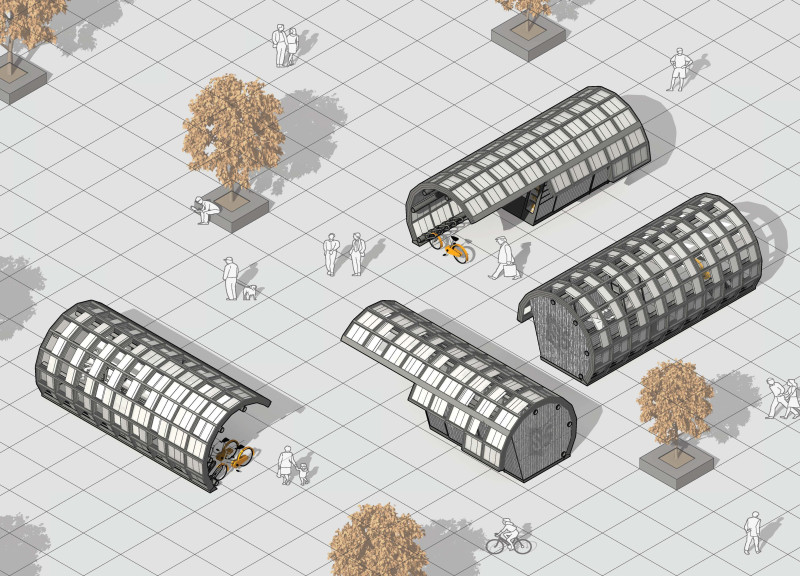5 key facts about this project
The Sensory Slider is an innovative space designed to enhance the reading experience within a lively urban setting. It offers readers a place that combines literature with architectural design, focusing on how light influences one’s interaction with books. The concept revolves around creating a semi-private reading room that invites both individuals and the community to explore the act of reading in a new way.
Materiality
The structure is built using a specific selection of materials that serve both practical and aesthetic functions. The outer layer is made from transparent polycarbonate, which offers protection from the weather while allowing natural light to flow in. This choice enables a connection with the surrounding environment. The middle layer features semi-opaque polycarbonate, providing some degree of privacy without completely blocking light, thus creating a friendly atmosphere. The inner layer consists of opaque panels that effectively block sunlight, giving users control over the lighting as they read.
Spatial Organization
The design is thoughtfully laid out around semi-circular frames that hold the sliding panels. This arrangement encourages interaction, allowing users to adjust their environment depending on the type of literature they are engaging with. The layout promotes a smooth transition from public areas into quieter spaces, making the movement from outside to inside feel more natural. In this way, the sliding panels are more than just barriers; they are dynamic features that enrich the user’s experience.
Community Integration
A notable aspect of the Sensory Slider is the Book Exchange Box, which serves as a focal point for the community. This feature encourages the sharing of books and promotes social connections between users. By fostering collaboration, it transforms the reading space into a lively cultural hub. The Book Exchange Box provides opportunities for conversations and discussions about various literary works, highlighting the value of shared experiences in reading.
The entry sequence is designed to create a natural flow from the outside world into the reading area. This transition enhances navigation and prepares readers for a change in atmosphere as they dive into their books. As they engage with the sliding panels, users take an active role in shaping their environment. Each visit to the Sensory Slider becomes a personal journey, tailored to individual preferences and reading choices.





















































